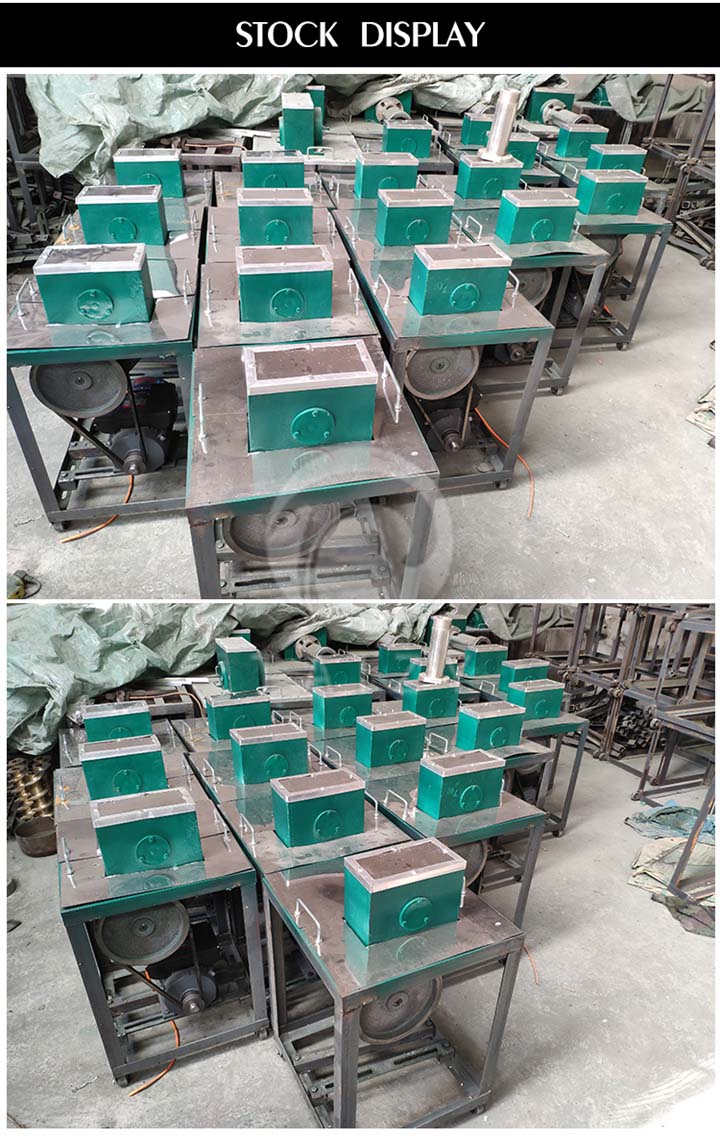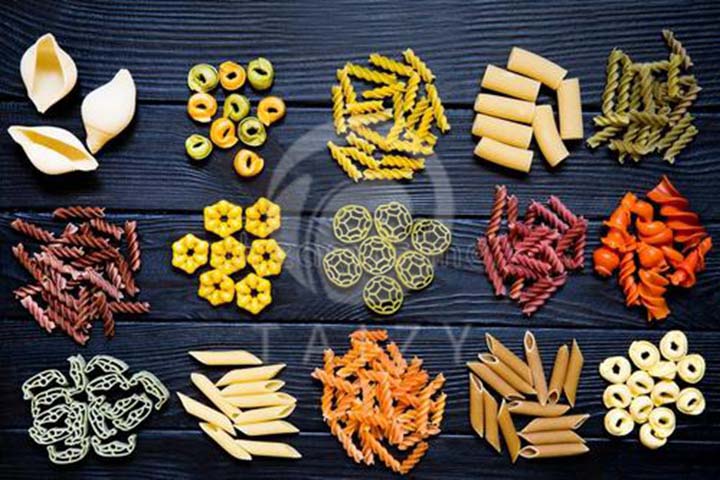เครื่องทำพาสต้าอุตสาหกรรม สามารถผลิตพาสต้าได้หลากหลายรูปทรง เช่น เปลือกหอย เห็ดหูหนู ดาวห้าแฉก หอยสังข์ พาสต้าเกลียว ตะเกียง ฯลฯ สามารถปรับแต่งได้ตามความต้องการของผู้ใช้ เครื่องทำพาสต้าไฟฟ้ามีการผลิตที่ประณีตและโครงสร้างที่สมเหตุสมผล โดยมีต้นทุนต่ำและผลผลิตสูง คุณสามารถเลือกเครื่องทำพาสต้าเครื่องนี้ได้อย่างไม่ต้องสงสัยหากคุณต้องการเริ่มต้นธุรกิจพาสต้า และเราจะสอนวิธีใช้งานและให้สูตรฟรี
วีดีโอการทำงานของเครื่องทำพาสต้าอุตสาหกรรม
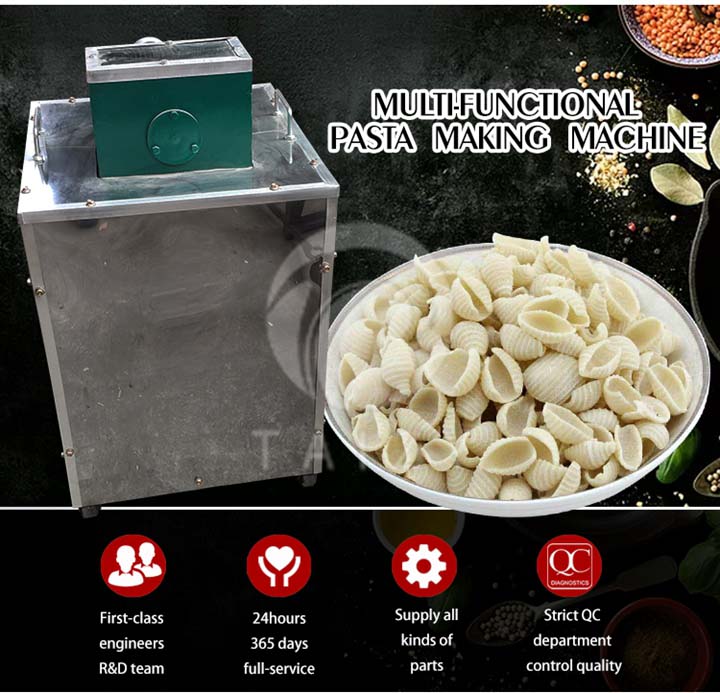
พารามิเตอร์ทางเทคนิคของเครื่องทำพาสต้าไฟฟ้า
| แบบอย่าง | PA-60 | PA-80 | PA-100 | PA-130 หัวเดียว | 130 หัวคู่ |
| แรงดันไฟฟ้า/โวลต์ | 220 | 380 | 380 | 380 | 380 |
| กำลัง/กิโลวัตต์ | 1.5-2.2 | 3กิโลวัตต์ | 4กิโลวัตต์ | 5.5 | 11 |
| น้ำหนัก/กก | 70 | 80 | 100 | 300 | 600 |
| ขนาด/มม | 420*600*760 | 500*700*800 | 500*750*900 | 1000*900*700 | 1500*1000*850 |
| ความจุกก./ชม | 15-20 | 30-50 | 60-70 | 75-110 | 150-220 |
| ราคาแม่พิมพ์ | 40 | 70 | 100 | 200 | 200 |
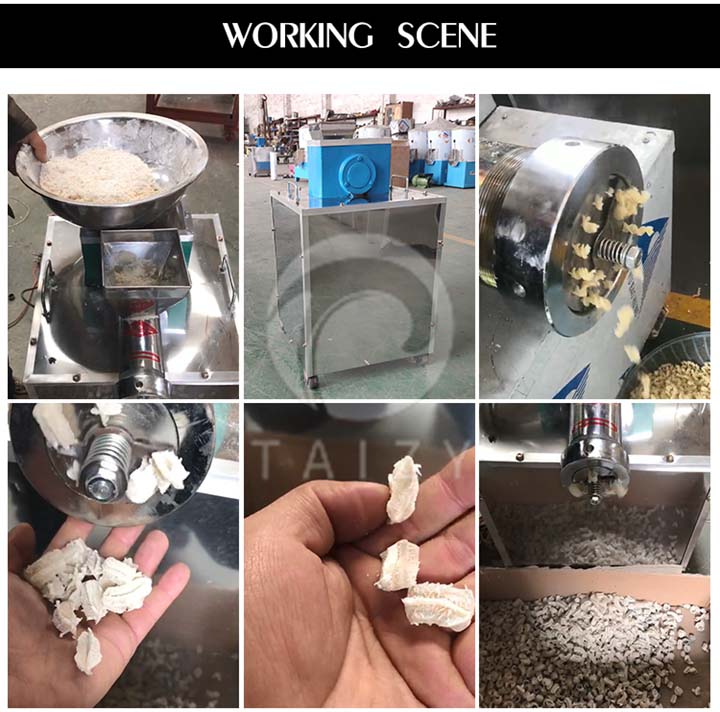
ข้อได้เปรียบของเครื่องทำพาสต้าเชิงพาณิชย์
- แม่พิมพ์มีหลากหลายและคุณสามารถปรับแต่งได้ตามความต้องการของคุณ
- พาสต้าเส้นสุดท้ายที่มีรูปทรงน่ารักแตกต่างซึ่งดึงดูดความสนใจของผู้คนให้ซื้อมัน ช่วยเพิ่มคุณประโยชน์
- เครื่องทำพาสต้า ใช้งานง่าย
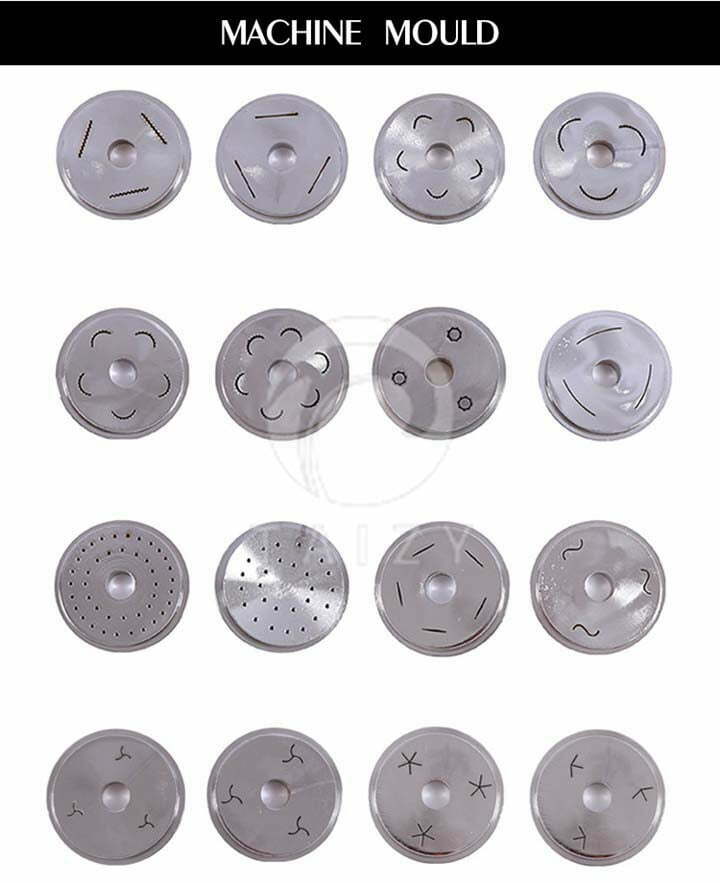
วิธีการใช้เครื่องทำพาสต้าอุตสาหกรรม?
- ใช้ประแจพิเศษในการเปิดน็อตและดึงแกนเกลียวออก
- ทำความสะอาดถังแป้งและแกนเกลียว จากนั้นใส่ลงในปลอก
- กุญแจขับเคลื่อนบนแกนเกลียวอยู่ในแนวเดียวกับช่อง "ปลอกหมุน" และติดตั้งเข้ากับเครื่องมือทำความสะอาด
- ขันน็อตแล้วขันให้แน่นด้วยประแจพิเศษ เมื่อเปิดเครื่อง เครื่องทำพาสต้าสามารถใช้งานได้หลังจากไม่ได้ใช้งานไม่กี่นาทีโดยไม่มีเสียงรบกวนผิดปกติ
หมายเหตุ: หลังจากใช้งานแล้ว ให้ถอดน็อตออกแล้วนำเครื่องมือออกมาแช่ในน้ำ ซึ่งสามารถเอาบล็อกพาสต้าที่เหลืออยู่ในเครื่องทำพาสต้าออกได้ ควรทำความสะอาดตะกรันในน็อตหลังจากไม่ได้ใช้งานเป็นเวลาหลายนาที บล็อกพาสต้าที่เหลือที่ไม่ได้ทำความสะอาดจะทำให้พาสต้าแห้งจนอุดตัน
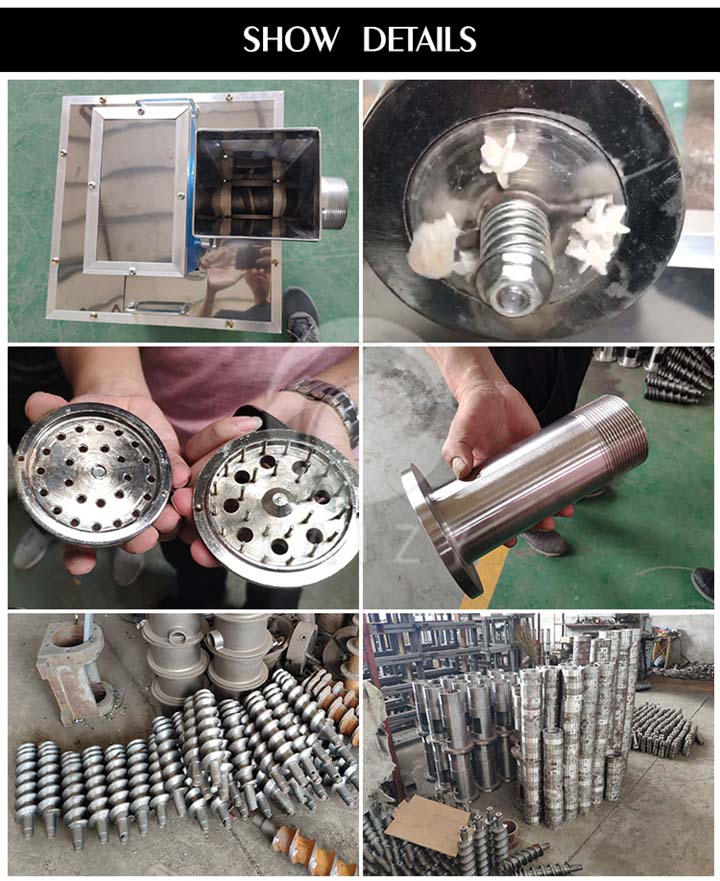
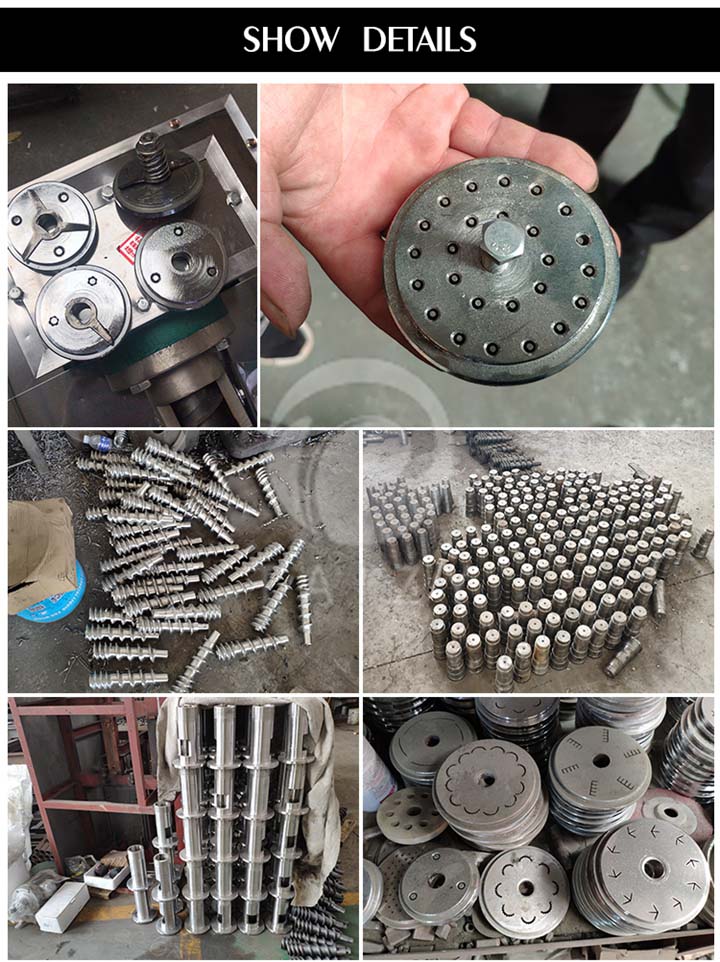
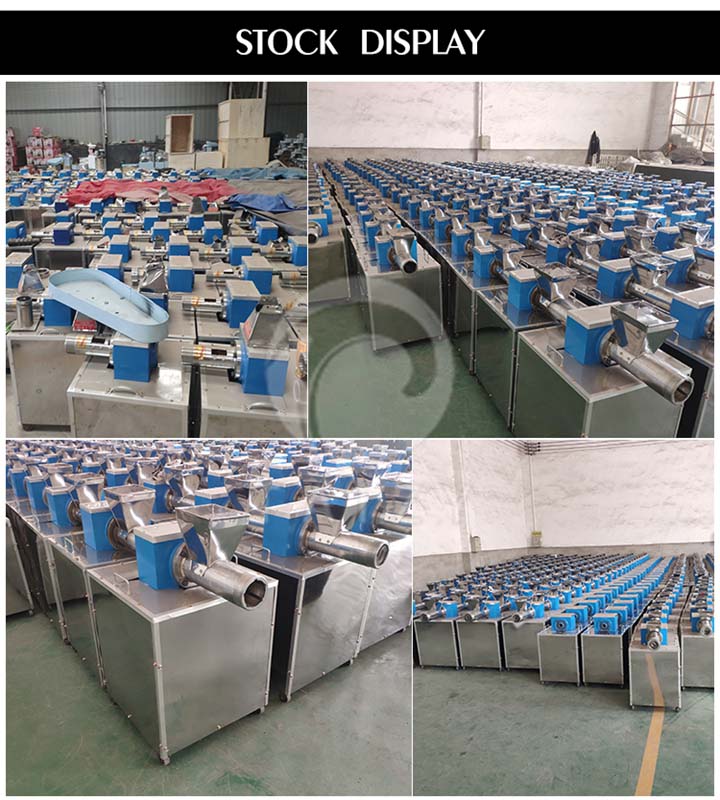
| น้ำตาลทรายขาว | 0.2% |
| ส่วนผสมหลัก | 100% |
| อากิโนะโมโตะ | 0.5% |
| เครื่องปรุงรสห้ารส | 1% |
| ขิงผง | 1% |
| แป้ง | 2% |
| ด่าง | 0.15% |
| น้ำ | 20.5-28% |
| เซลลูโลสที่กินได้ | 0.2% |
| ตัวแทนการเลี้ยงที่เหมาะสม |
วิธีทำแป้งกรอบที่มีรูปทรงเปลือกหอย?
- การเตรียมวัตถุดิบ: ชั่งน้ำหนักแป้ง เกลือ อัลคาไล และน้ำตามอัตราส่วนที่กำหนด (อุณหภูมิของน้ำประมาณ 20°C) คนเกลือและอัลคาไลในเวลาเดียวกัน หลังจากทั้งหมดละลายแล้วเทลงในแป้ง
- แป้งถูกกวนและสุก เมื่อคนและทำงานบนเครื่องเป็นเวลา 20 นาที อุณหภูมิภายในจะคงไว้สูงกว่า 10°C ซึ่งทำให้เส้นบะหมี่ดูดซับน้ำได้เต็มที่และพองตัวเพื่อสร้างโครงข่ายกลูเตน ทิ้งไว้ 10 นาที และรักษาอุณหภูมิพื้นผิวไว้ที่ 20-30°C
บันทึก:
①ในระหว่างกระบวนการกวน หากอุณหภูมิในการกวนต่ำเกินไป รูปร่างของแป้งไม่ใช่โครงสร้างเครือข่ายกลูเตน พาสต้าสุดท้ายจะดูไม่กรอบ
2.ในทางกลับกัน หากอุณหภูมิในการคนสูง แป้งจะแก่และสุกก่อนกำหนด ดังนั้นจึงจำเป็นต้องดำเนินการตามที่ต้องการ
3.แป้งที่กวนแล้วถูกส่งไปยังเครื่องทำพาสต้า ในระหว่างกระบวนการรีดซ้ำ แป้งจะถูกทำให้เป็นรูปเปลือกหอยแล้วส่งไปยังกระทะน้ำมัน
- การทอด: ใส่เปลือกที่หั่นเป็นชิ้นพร้อมกับแผ่นแม่พิมพ์ลงในหม้อน้ำมันร้อน (อุณหภูมิของน้ำมันจะอยู่ที่ประมาณ 180°C ) ทอดเป็นเวลา 1 นาที นำออก แห้ง บรรจุและจัดเก็บ หมายเหตุ: ควรใช้น้ำมันปาล์มเป็นวิธีที่ดีที่สุด อุณหภูมิน้ำมันสูงถึง 200°C ก่อนวางหม้อ อุณหภูมิน้ำมันอยู่ที่ 170 ℃ หลังจากวางหม้อแล้ว 3. ความต้องการวัตถุดิบ: แป้งสาลีแข็ง และปริมาณโปรตีนควรอยู่ภายใน 24-27%
